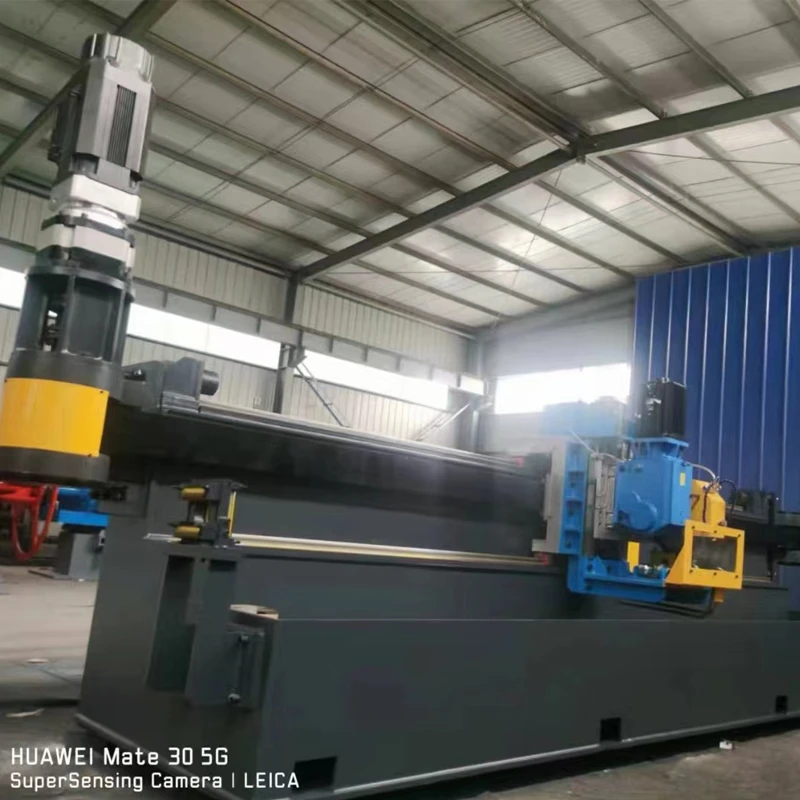Decoiler and Straightener Systems for Enhanced Metal Processing Efficiency
The Importance of Decoiler and Straightener in Metal Processing
In the world of metal fabrication, the processes of decoiling and straightening are critical to achieving high-quality finished products. Whether in the automotive, construction, or manufacturing industries, the efficiency and accuracy of these processes significantly impact production timelines and costs. This article explores the roles and benefits of decoilers and straighteners, shedding light on how they contribute to successful metal processing operations.
Understanding Decoilers
A decoiler is a machine used to unwind and feed coils of metal strip into the production line. Metal is typically supplied in coils due to ease of transportation and storage. However, to transform this raw material into usable components, it must be unrolled and fed accurately into various equipment for further processing, such as stamping or cutting. Decoilers come in several forms, including manual, semi-automatic, and fully automatic models.
The primary function of a decoiler is to control the unwinding of the coil, ensuring that the metal strip feeds smoothly and uniformly without snagging or twisting. This is vital for maintaining the integrity of the metal and preventing defects that could arise from improper handling. Moreover, modern decoilers often include features like tension control and speed adjustment, which allow operators to optimize the unwinding process based on the specific requirements of their operations.
The Role of Straighteners
Once the metal strip has been decoiled, it typically needs to be straightened before further processing. Metal coils can have various imperfections such as bends, twists, or residual stresses introduced during manufacturing or transport. A straightener is designed to correct these imperfections by passing the metal through a series of rollers that realign the strip, producing a flat and smooth surface that is essential for subsequent operations.
Straighteners work through a combination of mechanical power and precision engineering. They adjust the curvature of the metal strip through controlled pressure, allowing for accurate straightening without damaging the material. Different types of straighteners exist, including roller straighteners and servo-driven straighteners, each offering unique advantages depending on the specific application and required tolerances.
decoiler straightener

The Benefits of Using Decoilers and Straighteners
1. Increased Efficiency By automating the decoiling and straightening processes, manufacturers can significantly reduce the time required to prepare metal strips for processing. This streamlined approach leads to faster production cycles and increased throughput.
2. Improved Quality The use of decoilers and straighteners helps ensure that the metal strips are free from defects, resulting in higher quality end products. A straightened strip allows for better consistency in subsequent processes, ensuring that forming and cutting operations yield precise dimensions.
3. Reduced Material Waste Proper handling of metal strips minimizes the risk of damage during the decoiling and straightening processes. This reduction in waste not only lowers material costs but also contributes to more sustainable manufacturing practices.
4. Adaptability Modern decoilers and straighteners are often designed to accommodate a wide range of materials and coil sizes. This flexibility allows manufacturers to easily switch between different product lines, meeting the varied demands of their clientele without substantial retooling.
5. Enhanced Safety Automated decoiling and straightening systems reduce the need for manual handling, minimizing the risk of workplace accidents. By promoting a safer working environment, manufacturers can protect their workforce and decrease downtime related to injuries.
Conclusion
In summary, decoilers and straighteners are indispensable components in the metal processing industry. Their roles in efficiently managing and preparing metal strips for further processing are crucial for ensuring high quality and cost-effectiveness. As technology advances, innovations in decoiling and straightening equipment continue to enhance their capabilities, driving improvements in production efficiency, product quality, and workplace safety. Manufacturing businesses that invest in these critical technologies are likely to gain a competitive edge in today’s fast-paced marketplace.
-
High Frequency Straight Seam Welded Pipe Production Line-BzZhou Xinghua Machinery Equipment Manufacturing Co., LTD.|line pipe steel&welded gas pipeNewsJul.30,2025
-
High Frequency Straight Seam Welded Pipe Production Line-BzZhou Xinghua Machinery Equipment Manufacturing Co., LTD.|High Precision&Automated SolutionsNewsJul.30,2025
-
High Frequency Straight Seam Welded Pipe Production Line - BzZhou Xinghua Machinery Equipment Manufacturing Co., Ltd.NewsJul.30,2025
-
High Frequency Straight Seam Welded Pipe Production Line-BzZhou Xinghua Machinery Equipment Manufacturing Co., LTD.|Precision Welding, High EfficiencyNewsJul.30,2025
-
High Frequency Straight Seam Welded Pipe Production Line|BzZhou Xinghua|Precision Welding&EfficiencyNewsJul.30,2025
-
High Frequency Straight Seam Welded Pipe Production Line - BzZhou Xinghua|Precision Engineering&EfficiencyNewsJul.30,2025


